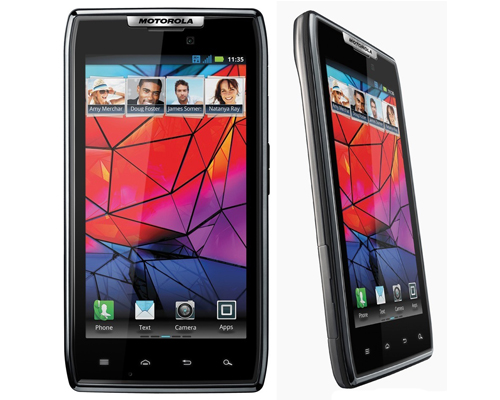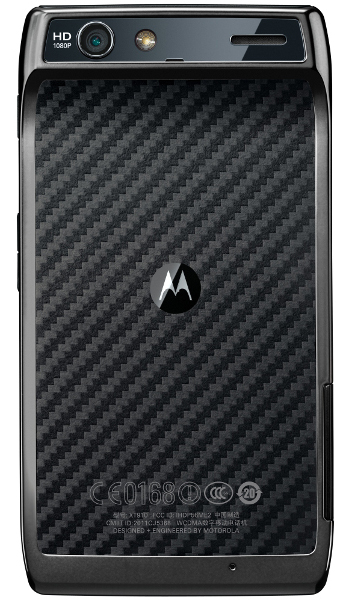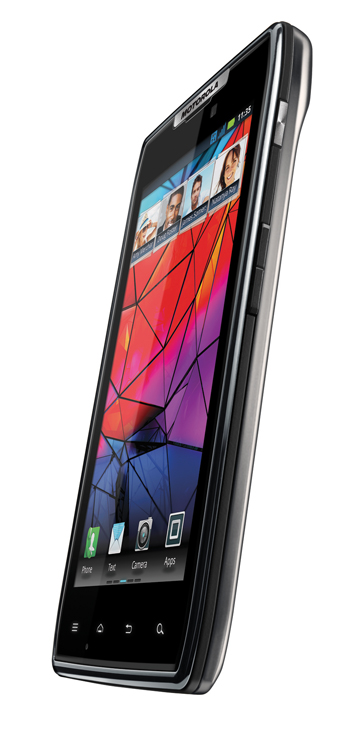
Remember the Razr? It was Motorola’s incredibly popular series of super-thin flip phones that sold more than 130m units, making it the most popular “clamshell”-style phone in the history on the mobile device industry.
Well, the Razr is back, at least in name if not in design, in the form of the XT910. However, the new Razr, and Android-powered smartphone, bears little resemblance, apart from its slim profile, to the clamshells that Motorola made so popular in the middle of last decade.
The XT910 is a feature-packed device and a great advertisement for a company many critics had written off as a handset manufacturer.
Like many of its Android-based contemporaries, the Razr boasts a 540×960-pixel 4,3-inch screen. Like the high-end offerings from Samsung — the Galaxy S II and the Galaxy Note — it’s a “super Amoled” display that looks fantastic in almost all light conditions. Despite its large screen, it feels smaller in the hand than the similarly sized HTC Sensation, no doubt because of its ultra-slim profile.

At just 7,1mm at its thickest and weighing only 127g, the Razr has a wafer-thin body that broadens at the top where the 8-megapixel camera and LED flash are housed. Like Apple, Motorola has opted for a closed unit with the Razr — the 1 780mAh battery cannot be removed and the micro Sim (yes, you read that right) and microSD slots are accessed beneath a cover on the side of the device.
With 16GB of internal storage and support for an additional 32GB using microSD cards, the Razr is well positioned to exploit its fantastic display for media playback – and the camera shoots video at 1080p. Motorola claims a screen density of 256 pixels per inch.
The Razr ships with Google Android 2.3.5 (that’s Gingerbread to those who don’t like jargon) and this, in conjunction with the handset’s powerful 1,2GHz dual-core Cortex-A9 processor and 1GB of RAM, results in a snappy and smooth interface. Motorola says it will be upgradeable to the new Android 4.0 (Ice Cream Sandwich) — but there’s no date specified for that just yet. Given that Google is in the process of buying the company, we’re inclined to believe it won’t take long.
Motorola’s Android overlay provides five home screens, as opposed to the seven favoured by some other manufacturers, but this shouldn’t present any sort of limitation for most users.
Otherwise, the overlay is primarily cosmetic, with a couple of Motorola-specific widgets and is less offensive and all-encompassing than the MotoBlur overlay the company favoured for phones like the Atrix.

Like the Atrix before it, the Razr offers an HDMI port, a further indication that Motorola wants to position the Razr as a pocket-sized media powerhouse. To this end it also includes support for DLNA — which allows users to stream media to compatible devices – and the ability to use the device as a Wi-Fi hotspot.
It also includes an FM radio, which, while previously common on all handsets, is now something that some manufacturers choose to include and other don’t.
Being a high-end smartphone, the Razr includes 3G (up to 14,4Mbit/s on the downlink) and all Wi-Fi protocols. The display supports multi-touch input, offers haptic feedback, and is protected by damage-resistant Gorilla Glass. There’s also an accelerometer for automatic rotation of the user interface and a proximity sensor for deactivating the screen during calls.
As with the Atrix, Razr users can purchase an optional “lapdock” that essentially turns the device into a netbook. The lapdock is a “dumb” device in that it’s a screen, keyboard and battery but isn’t functional without the Razr plugged into it. It’s an interesting move from Motorola and we will have to wait until its next set of financial results is announced to see how well the accessory has performed.
Motorola has included the ability to create “smart actions” on the Razr. These include location-triggered actions like turning off mobile data when you get to the office or time-based actions like turning off all data functionality between, say, midnight and 6am.
Like so many of its counterparts, the only serious complaint to be levelled at the Razr is its battery life. With Wi-Fi on but the device otherwise idle, power on our test unit dropped by about 15%/hour. Though smartphone power users will be accustomed to charging their devices daily, or even several times a day, it’s the one area where smartphones really need to catch up in terms of innovation.
Otherwise, the Motorola Razr is a beautiful device. The interface is clean and intuitive, the phone is incredibly responsive, and the display is outstanding. If you’re looking for an Android smartphone, the Kevlar-backed Razr is both stylish and incredibly capable. Quite frankly, it’s a joy to use. — Craig Wilson, TechCentral
- The Razr costs R6 999 out of contract and is available now
- Subscribe to our free daily newsletter
- Follow us on Twitter or on Facebook
- Visit our sister website, SportsCentral (still in beta)




